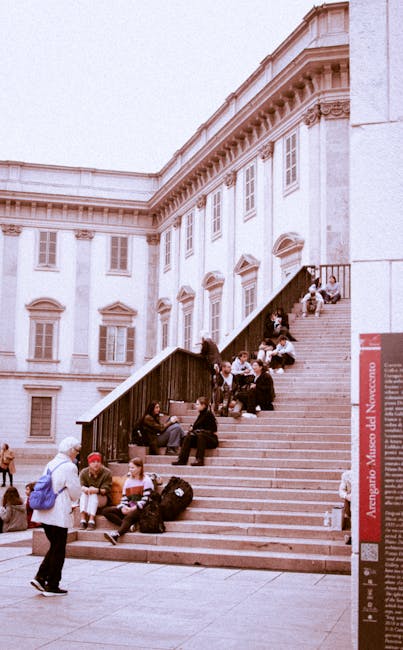In a small village, nestled between snow-capped mountains, a curious child named Elara asked her grandmother about Christmas. With a twinkle in her eye, the grandmother began to weave a tale. “Long ago, in a humble stable, a child was born under a bright star. Shepherds and wise men traveled far to celebrate this miracle. But Christmas grew, absorbing traditions from many cultures—feasting, gift-giving, and the Yule log. Each year, we gather not just to remember a birth, but to share love, joy, and hope, reminding us of our shared humanity.” Elara smiled, understanding that Christmas was a tapestry of stories, woven through time.
Table of Contents
- Exploring the Origins of Christmas Traditions
- The Evolution of Christmas Celebrations Through the Ages
- Cultural Influences That Shaped Modern Christmas Practices
- Rediscovering the Spirit of Christmas: Insights and Recommendations
- Q&A

Exploring the Origins of Christmas Traditions
The tapestry of Christmas traditions is woven from a rich history that spans centuries and cultures. Many of the customs we cherish today have roots in ancient pagan festivals, such as the Roman celebration of Saturnalia, which honored the god Saturn with feasting, gift-giving, and merriment. As Christianity spread, these vibrant traditions were adapted and transformed, allowing early Christians to celebrate the birth of Jesus while still honoring the seasonal festivities. This blending of customs gave rise to practices like decorating with holly and ivy, which were originally symbols of fertility and rebirth in pre-Christian rituals.
In addition to pagan influences, various cultural elements have shaped the way we celebrate Christmas around the world. For instance, the figure of Santa Claus has evolved from St. Nicholas, a 4th-century bishop known for his generosity, into the jolly, red-suited character we recognize today. Different countries have their own unique traditions, such as the German Weihnachtsmann or the Italian La Befana, each contributing to the global mosaic of Christmas celebrations. The exchange of gifts, the singing of carols, and the gathering of family around a festive meal all reflect a shared desire for connection and joy, transcending the boundaries of time and geography.

The Evolution of Christmas Celebrations Through the Ages
Throughout history, the celebration of Christmas has undergone significant transformations, influenced by cultural, religious, and societal changes. In ancient times, winter solstice festivals were common, with various civilizations honoring the return of longer days. The Romans celebrated Saturnalia, a week-long festival of feasting and merriment, which laid the groundwork for many Christmas traditions. As Christianity spread, the church sought to incorporate these existing customs, leading to the establishment of December 25th as the birth date of Jesus Christ. This melding of pagan and Christian practices gave rise to a unique holiday that embraced both reverence and revelry.
As centuries passed, Christmas evolved further, reflecting the values and norms of different eras. In the Middle Ages, the holiday became a time for communal gatherings, marked by elaborate feasts and the exchange of gifts. The Reformation brought about a more austere approach, with some groups rejecting the celebration altogether. However, the Victorian era saw a revival of Christmas spirit, emphasizing family, charity, and festive decorations. Key elements such as the Christmas tree, caroling, and the figure of Santa Claus emerged during this time, solidifying the holiday’s place in popular culture. Today, Christmas is celebrated worldwide, blending diverse traditions and customs, yet still rooted in its rich historical tapestry.

Cultural Influences That Shaped Modern Christmas Practices
The evolution of Christmas practices is a tapestry woven from various cultural threads, each contributing to the rich traditions we celebrate today. **Pagan rituals** played a significant role, particularly the winter solstice celebrations that honored the return of longer days. The ancient Romans celebrated Saturnalia, a festival marked by feasting, gift-giving, and merriment, which laid the groundwork for many modern customs. Additionally, the Norse Yule traditions, including the Yule log and the concept of a festive feast, have influenced the way we gather and celebrate during the holiday season.
As Christianity spread, it absorbed and transformed these existing customs, creating a unique blend of practices. **Saint Nicholas**, a 4th-century bishop known for his generosity, became a central figure in the evolution of Santa Claus, merging with local folklore and traditions. The Victorian era further shaped Christmas with its emphasis on family, charity, and elaborate decorations, introducing the Christmas tree and greeting cards. Today, these diverse influences continue to manifest in our celebrations, showcasing a holiday that is both a reflection of its historical roots and a canvas for contemporary expression.

Rediscovering the Spirit of Christmas: Insights and Recommendations
As we delve into the rich tapestry of Christmas history, it becomes evident that this festive season is a mosaic of traditions, beliefs, and cultural influences. Originating from ancient winter solstice celebrations, the holiday has evolved significantly over the centuries. The early Christians adopted December 25th to commemorate the birth of Jesus, intertwining it with pagan customs such as Yule and Saturnalia. This blending of traditions has given rise to a unique celebration that emphasizes themes of hope, joy, and community. Today, many of the symbols we associate with Christmas—like the Christmas tree, mistletoe, and even Santa Claus—have roots in various cultural practices, showcasing the holiday’s ability to adapt and thrive through time.
To truly embrace the spirit of Christmas, one can draw inspiration from its diverse history. Consider incorporating **meaningful traditions** that resonate with your family, such as:
- **Creating handmade ornaments** that reflect personal stories or memories.
- **Volunteering** at local shelters or food banks to spread kindness and generosity.
- **Exploring global customs** by trying dishes from different cultures during your holiday meals.
- **Reading classic Christmas literature** that captures the essence of the season, fostering a sense of nostalgia and reflection.
By embracing these practices, we can rediscover the true essence of Christmas, celebrating not just the festivities, but the deeper connections that bind us together as a community. This holiday season, let us honor the past while creating new memories that reflect the spirit of love and togetherness.
Q&A
-
What are the origins of Christmas?
The origins of Christmas can be traced back to ancient pagan festivals, particularly the Roman festival of Saturnalia and the winter solstice celebrations. The early Christian church adopted December 25th as the date to celebrate the birth of Jesus Christ, aligning it with these existing traditions to facilitate the conversion of pagans.
-
Why is December 25th celebrated as Christmas?
December 25th was chosen as the date for Christmas likely due to its proximity to the winter solstice, when days begin to lengthen. This timing symbolized the arrival of light into the world, paralleling the Christian belief in Jesus as the “Light of the World.”
-
How did Christmas traditions evolve over time?
Christmas traditions have evolved significantly over the centuries, influenced by various cultures and customs. Elements such as the Christmas tree, gift-giving, and Santa Claus have roots in both pagan and Christian practices, blending to create the festive celebration we know today.
-
Is Christmas celebrated the same way around the world?
No, Christmas is celebrated in diverse ways across the globe. Different countries incorporate unique customs, foods, and traditions, reflecting their cultural heritage. For example, in some places, Christmas is a religious observance, while in others, it is more of a secular holiday focused on family and festivities.
As we unwrap the layers of Christmas history, we discover a tapestry woven from diverse traditions and beliefs. This festive season, let us celebrate not just the holiday itself, but the rich stories that unite us across time and culture.

大家好,我是彼得潘,專業的手法身體治療師。我喜歡探索和研究各種主題,並透過與人工智慧的合作分享專業、實用、有趣的文章。我們定期進行人工審核,以確保內容的準確性。如果您發現文章中有任何不準確的地方,請隨時與我們聯繫,我們會及時糾正。您可以透過 [email protected] 與我們聯繫。



